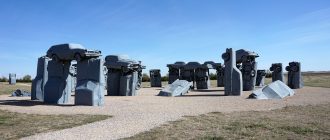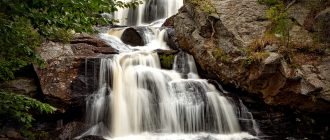Things to Do in Minnesota
If you are planning a vacation in the state of Minnesota, you should read this article for ideas on what to do while in the area. You can also read articles about the Minneapolis Sculpture Garden, Minnehaha Falls, the Pipestone National Monument, and the Lake Superior Marine Museum. There is a lot to see in Minnesota, but this article will focus on some of the top attractions. Here is a list of some of the top things to do in Minnesota.
Minneapolis Sculpture Garden
The Minneapolis Sculpture Garden is an outdoor art gallery with free admission. Open daily from 6 am to 12 midnight, the garden contains over 40 pieces of permanent sculpture and plenty of space to relax and sketch. You can take a self-guided tour or simply sit and sketch the artwork that catches your attention. The Minneapolis Park & Recreation Board has information about public parks and hiking trails in the area, and the organization accepts tax-deductible donations to support its programs.
If you are looking for a free attraction in the heart of the Midwest, consider checking out the Minneapolis Sculpture Garden. There are over 40 works on display and many of them are made to look like postcards. This museum also has benches so you can relax in a shady spot while admiring the works. Located just a mile southwest of downtown Minneapolis, the sculpture garden is a wonderful option for a day trip from the city.
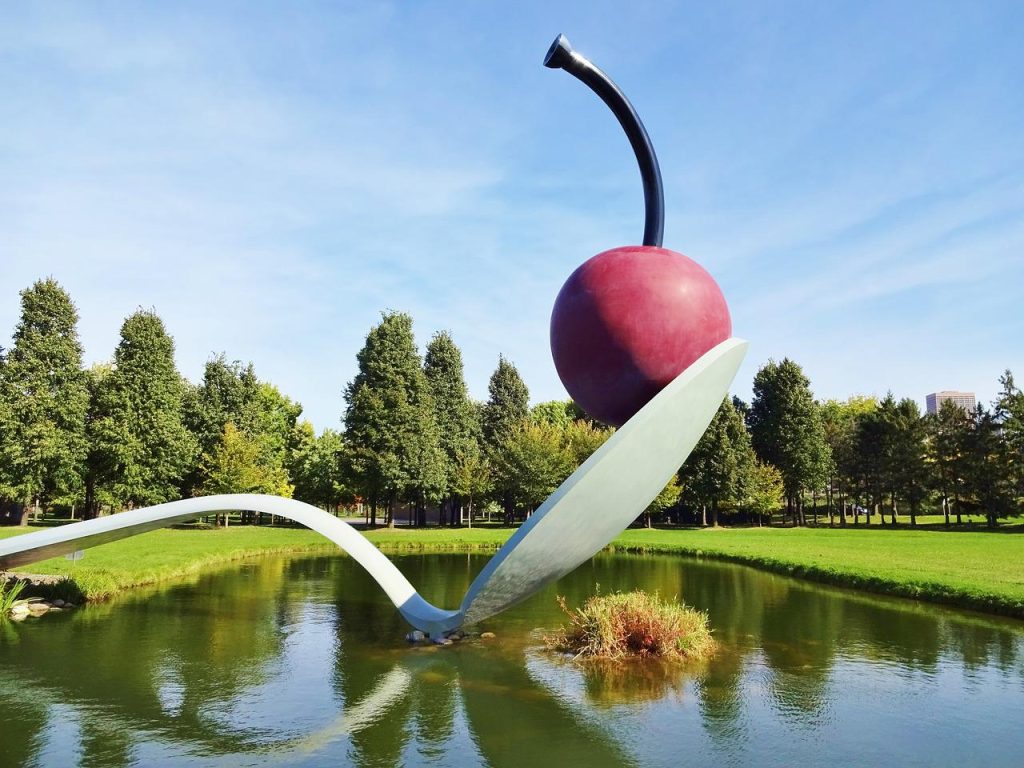
There is so much art to see at the Minneapolis Sculpture Garden that it may not be easy to see everything. The sculptures extend beyond the garden area, including two that are larger than life. If you are larger than average, you can rent a golf cart to make your tour easier. You can also visit the Wurtele Upper Garden adjacent to the Walker Art Center. When you are done viewing the pieces, you will be able to explore more of the park in peace.
If you are traveling with a family, you can spend the day with them at the Minneapolis Zoo or the Fort Snelling Art Center. For culture hounds, you can marvel at the Walker Art Center or see a show at the Guthrie Theater. The Mall of America is conveniently located just southwest of the Twin Cities, and the Chain of Lakes is a scenic drive to the west.
A visit to the Stone Arch Bridge is another must-do while in Minneapolis. The historic landmark was constructed in 1883 to carry trains but was later converted to transport automobiles. It was designated a Historic Civil Engineering Landmark in 1971. The stone arch bridge is the only one made of stone that crosses the Mississippi River and is a major tourist attraction. You can also view the Stone Arch Bridge from the top observation deck.
Minnehaha Falls
If you’re looking for a refreshing waterfall, Minnehaha Falls in Minnesota may be the place for you. Minnehaha Park is an urban oasis in Minneapolis, Minnesota, where you can take in the falls, or hike down to the lower reaches of Minnehaha Creek. Here, you can relax on the rocky rocks or enjoy the views of the city and the surrounding area. No matter what your reason for visiting the area, you’ll be glad you did.
Minnehaha Falls Park is one of Minnesota’s first state parks. This park contains two beautiful waterfalls, one that is over several thousand feet high, and one that is surrounded by native trees. The park has several metered parking lots, which are ideal for picnicking, and is a convenient place for visitors to unwind after a day of sightseeing. Minnehaha Falls is a popular attraction during the summer and fall seasons, but you can also visit in the winter for a view of frozen falls.
The attraction’s name is derived from its namesake, John Harrington Stevens. The Stevens House, which was built near St. Anthony Falls in 1876, was the first wood-frame dwelling west of the Mississippi. Stevens had acquired the land by gaining ferry service from Fort Snelling, and his home was the center of civic and social activity. The Stevens House is now the home of Hennepin County, which was organized in the house in 1876.
The life-sized Hiawatha Statue at Minnehaha Falls is an iconic landmark in the region. The statue was originally cast in bronze for the Chicago World’s Fair in 1893. Eventually, Mrs. L.P. Hunt organized a campaign to buy the statue and bring it to Minnesota. The statue, which is now known as the Hiawatha Statue, was transferred to Minnehaha Falls in 1912.
The proposed project will utilize the expertise and resources of different partners. The City of Minneapolis, MPRB, the State of Minnesota Veterans Home, and the U.S. Army Corps of Engineers will all contribute to the project’s goals. The overall objective is to improve the natural resources in the Glen area by addressing stormwater management, streambank stabilization, and ecological restoration. While the proposed project has many unknown details, it’s clear that it will make a significant contribution to the Twin Cities.
Lake Superior Marine Museum
If you’ve ever been in awe of a ship, you’ll be interested in a visit to the Lake Superior Marine Museum in Duluth. This maritime-filled visitor center is an excellent way to learn about the development of Great Lakes shipping and ship work. You’ll also find a variety of exhibits and lectures that explain shipboard life and ship work. In addition to the museum, there are many other things to do in Duluth and surrounding areas.
For more historical insight, check out the nearby Lake Superior Maritime Visitor Center operated by the US Army Corps of Engineers. This museum is located in Canal Park and overlooks the entrance to the Duluth-Superior harbor. Its exhibits detail the history of commercial shipping on the upper Great Lakes. You can also see artifacts from sunken ships and the Aerial Lift Bridge.
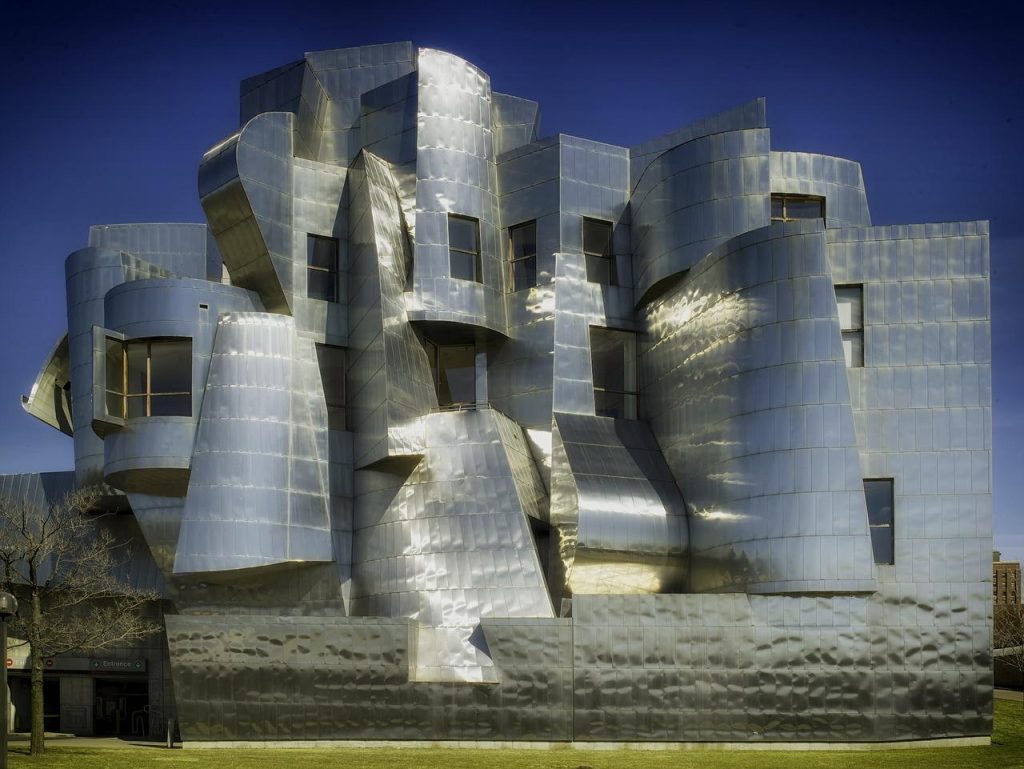
While you’re in Duluth, take time to visit the St. Louis County Depot. This historic railroad depot is home to a variety of interesting exhibits, and the museum does its part to keep it maintained and healthy. Another museum worth visiting in Duluth is the Fairlawn Mansion & Museum. This Queen Anne Victorian mansion in Superior is home to many fascinating antiques and lush gardens. It’s also open to the public for tours and events. The Mansion served as the city’s Children’s Home for 42 years.
Besides Canal Park, visitors can also check out the Lake Superior Marine Museum. This museum exhibits artifacts from sunken ships. The museum also offers a lakeside walking trail. Whether you’re looking for a relaxing stroll along the lake, the museum is a must-visit. At the museum, you’ll have a great time learning about the history of shipbuilding in the Twin Ports.
If you’re looking for free museums in Duluth, you can take in the Tweed Museum of Art. This is a renowned institution dedicated to collecting and sharing art with the public. In addition to the museum’s collection of visual arts, the Tweed has two resident mural artists and has engaging programs and exhibits that provoke thought about cultures and global humanity. And, while you’re there, don’t miss the Hawk Ridge Bird Observatory!
Pipestone National Monument
If you’ve never heard of Pipestone, it’s time to get to know it. The red stone is more than a tourist attraction – it’s also home to some very interesting history. In fact, the area’s first residents used pipes to seal treaties and make peace intentions. Pipestone pipes have also been used for trading and religious ceremonies. Today, visitors can tour the monument’s visitor center, watch informative films, and admire interpretive displays.
The Circle Trail is a three-quarter-mile hike through the site’s natural and cultural resources. The trail includes historical markers and a video about pipe-making traditions. Visitors can also see a live demonstration of pipe-making. The trail is not wheelchair accessible, but it can be navigated with assistance. If you’re traveling with children, you can also take advantage of the park’s educational film, which explains the history of the Pipestone quarries and how they were made.
Visitors can also spend time in downtown Pipestone. This quaint town is home to 30 commercial buildings, including the first National Bank. Some of these buildings are Richardsonian-Romanesque-style buildings, while others are Italianate-style. A great time to stop in and watch the show is guaranteed. And don’t forget to take in the beautiful view of the surrounding countryside from the top of a hill.
The area’s Native American culture is evident in the area’s Stone Mountain. American Indians believe the place to be sacred and used it to make pipes. Because of the rock’s significance, visitors are encouraged to respect the native culture. You may even see a Native American gathering the rock. Regardless of whether you decide to observe the mystical rock formations, you’re guaranteed to enjoy the beauty of nature and the surrounding area.
In addition to the monument’s natural beauty, you’ll find plenty of other things to see in Pipestone. For instance, you can visit the historic downtown area, where the building’s historic district was fashioned from local Sioux quartzite. For a more specialized experience, you can take a look at the county courthouse, which is the most stylized. Its 110-foot-tall clock tower features a domed top.
Top 5 Places to Visit in Minnesota
If you are looking for a unique and historical experience, consider a trip to UMore Park in Mill City. Formerly known as the Gopher Ordnance Works, the site manufactured gunpowder during World War II. It has remained abandoned since the end of the war. While Mills Ruins Park still has some amenities, it is an ode to the old flour mills. At sunset, you can experience spine-chilling views of the ruins.
Mall of America
If you are looking for a place to go on a group outing, the Mall of America is an excellent choice. This massive shopping complex is the largest in the country with over forty million visitors each year. Its 520 stores and restaurants are a popular spot for family outings. Depending on your mood, you can choose from many dining options. You’ll also find an aquarium that contains more than 1.2 million gallons of water, and it even has its own underwater glass tunnel.

A day at the Mall of America is not complete without a visit to the Nickelodeon Universe. This seven-acre indoor theme park features thrilling rides and games and has the largest indoor zip line in the United States. Visitors can even try their luck on the Barnacle Blast, an indoor zip line that takes you 60 feet high above the park. A day at the Mall of America is especially fun during Minnesota’s frigid winters, as you’ll be able to enjoy the cool weather indoors.
You can also enjoy a movie at the CMX Market Cinema Experience. This venue offers themed bars and food for everyone. A visit here is a fun night for the entire family. Whether you’re visiting for business or pleasure, you’ll find plenty to do in the Mall of America. With over 50 restaurants on site, you’ll have plenty to choose from. If you’re in the mood for a show, you can catch one of Rick Bronson’s comedy shows.
Another fun place to visit is the Crayola Experience, an indoor theme park. This theme park houses gigantic LEGO figures, and you can even purchase a LEGO kit for the kids to take home. The store also features over 520 retail outlets for you to shop in. Shopping is a great way to spend a day at the Mall of America, and shopping is tax-free in Minnesota.
Split Rock Lighthouse State Park
The Split Rock Lighthouse State Park is a popular destination in Minnesota for visitors of all ages. Located on the state’s northern shore, this park features many recreational activities, including a kayaking area and a paved Gitchi-Gami State Trail. You can also go scuba diving and cross-country skiing. Camping facilities are also available at Split Rock Lighthouse. The Minnesota Department of Natural Resources oversees the campgrounds at Split Rock Lighthouse State Park.
The split rock lighthouse is a popular attraction in Minnesota, both summer and winter. Visitors can enjoy the view of Lake Superior and take a dip in the refreshing waters of Split Rock Lake. There is also a protected cove for kayaking and picnicking beyond the treeline. The Split Rock Lighthouse State Park is close to the Twin Cities but can be reached by car within three and a half hours from both. Parking at Split Rock Lighthouse is easy, as there are four regular parking lots, one camper’s lot, and a cart that can be used for camping purposes.
The historic Split Rock Lighthouse, built in 1909, is an iconic landmark in Minnesota. The lighthouse stands high above the lake and is one of the most picturesque sites on the lake. Split Rock Lighthouse State Park offers more than 10 miles of hiking trails. A museum about the Split Rock Lighthouse and its history operates at Split Rock Lighthouse State Park, and tours are available on select weekends and holidays.
The park was originally called Split Rock Lighthouse Wayside and was initially 35 acres in size. In 1967, the state added another 1,872 acres to the park, resulting in Split Rock Lighthouse State Park. Since then, the park has become a renowned attraction for visitors of all ages. The split rock lighthouse is an iconic attraction in the area, and a park is a fantastic place for hiking and kayaking.
Mill City Museum
In Minneapolis, you can visit the Mill City Museum, a museum of the Minnesota Historical Society. The museum is housed in the ruins of the Washburn “A” mill. It is located adjacent to Mill Ruins Park, which is located on the Mississippi River. Visitors can tour the ruins and learn about the history of the mill and Minneapolis. It is free to visit, and visitors are welcome to take a self-guided tour to learn about the history of this fascinating city.
Located on the Mississippi River, the Mill City Museum was once the world’s largest flour mill. The museum recreates milling processes in authentic environments, with equipment, railroad cars, and more. Visitors can also explore a baking lab and take part in cooking demonstrations. The museum offers guided tours and a gift shop and is accessible by public transportation and by bus and light rail. In addition to the museum, the nearby Guthrie Theater and Stone Arch Bridge provide the perfect setting for a fun family day out.
If you are looking for a fun, educational, and fun activity, you can’t go wrong with the Mill City Museum. It is a National Historic Landmark and is located on the Mississippi riverfront. You’ll learn about the history of the flour industry, the city of Minneapolis, and the Mississippi River. Whether you’re a history buff or a foodie, the Mill City Museum is sure to delight.
Located in the ruins of the former Washburn “A” Mill, the Mill City Museum focuses on the development of Minneapolis through flour milling and other industries that used hydropower from Saint Anthony Falls. The Flour Tower Tour is an eight-story elevator that takes visitors through the history of the mill and the city’s role in the industry. Visitors can also enjoy a baking and water lab while learning about the history of the area. A visit to the Mill City Museum should last at least two hours.
Minnehaha Falls
Minnehaha Park is a city park located in Minneapolis, Minnesota. It is home to Minnehaha Falls and the lower reaches of Minnehaha Creek. The lower falls are a must-see sight for anyone visiting the city. If you are planning a trip to Minneapolis, make sure you visit this place. It is sure to be an unforgettable experience! Minnehaha Falls is located in a city park, so make sure you plan your visit in advance!
The Twin Cities were developed around the falls. Visitors to this natural beauty will find the best view from Water Power Park on Main Street or from the Stone Arch Bridge. From these viewpoints, you can see the early stages of the Mississippi River. The city skyline is breathtaking and it is impossible to grow weary of the city’s skyline. Native Americans named these falls before Father Hennepiin’s arrival in 1680, but poor engineering caused them to need stabilization in the 1930s.
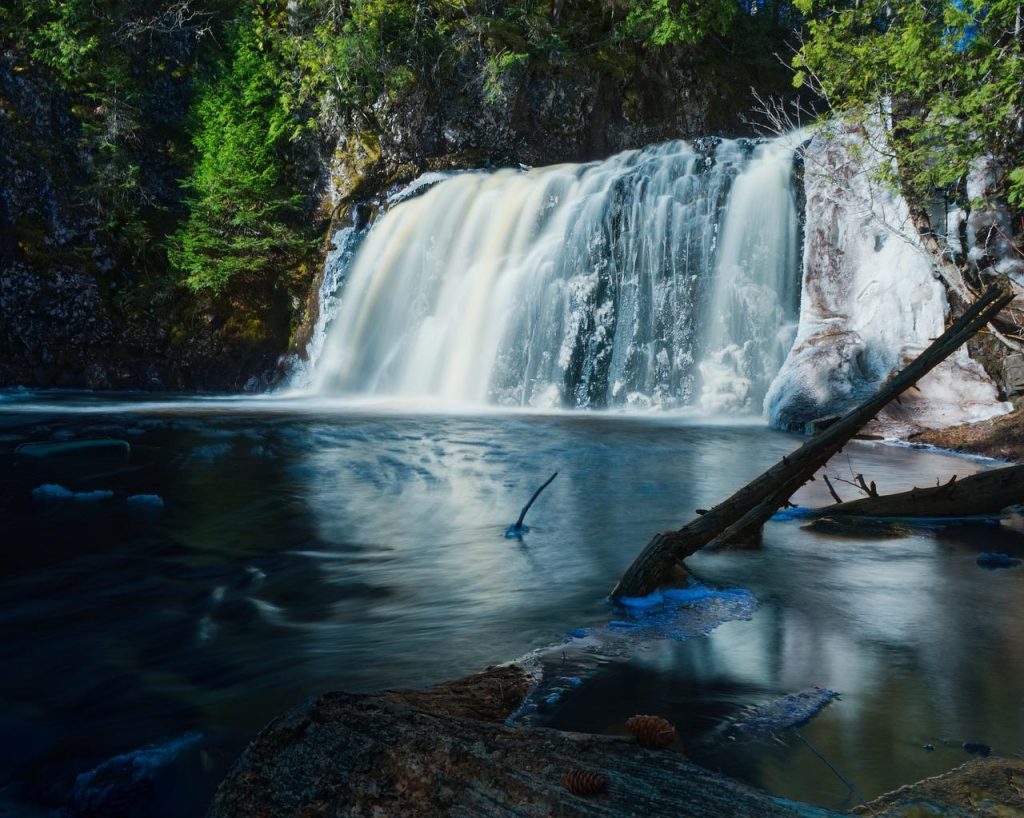
Minnehaha Falls places to visit, Minnesota is a popular urban waterfall that is located next to a popular seafood joint. The water is at its highest during June after the Spring rain. It is also accessible in the winter and ice crystals are guaranteed to cover the waterfall. Visitors can also check out Hidden Falls, a hidden waterfall near Minnehaha Park. Listed below are the best places to visit in Minnesota:
The Twin Cities of Minnesota are Minneapolis and St. Paul. While both cities are distinctly different, each has its own unique character. Minneapolis is more modern while St. Paul boasts old Victorian homes and narrow streets. The Minnehaha Falls, places to visit in Minnesota, are a popular destination for tourists and locals alike. It is a perfect place for picnics and concerts! You can enjoy all the natural beauty of Minnesota by taking your family here.
International Wolf Center
If you want to learn more about wolves, head to Ely, Minnesota, and visit the International Wolf Center. This educational and research center promotes the survival of wolf populations by teaching about these animals and their role in human society. Its mission is to protect and preserve wolf populations throughout the world. It has been educating the public for over 15 years. Visitors can learn more about wolves, how to protect them, and how to help them live long and prosper.
This is the perfect place to take your children to learn about wolves. Kids will love watching the ambassador wolves. The wolf exhibit is designed to appeal to the whole family, and parents will love the open layout. They’ll also enjoy the children’s play and learn in the area, where kids can run free as if they were raised by wolves. In addition to the exhibit hall, there are also several wolf-themed activities for children.
The International Wolf Center is a unique learning experience in Minnesota. It’s the home to wild and resident Ambassador Wolves. Visitors will learn about wolf behavior and how they interact with humans. Visitors can also see the Exhibit Pack of Wolves, a group of eight Ambassador wolves living in captivity. In addition, the center features five hundred square meters of exhibits, including a new wolf pup every four years. The new exhibits aim to increase visitors’ awareness of wolf behavior while enhancing the experience without increasing the bottom line.
In addition to teaching visitors about wolves, the International Wolf Center features ambassador wolves, who reinforce educational messages and build connections with visitors. The staff naturalists introduce visitors to the pack and give captivating programs. In addition to hosting school groups, the facility also hosts seminars, webinars, and even a symposium dedicated to wolves. There is a good chance that wolf-loving visitors will learn about the role wolves play in human society and their relationship with wolves.
The Best Sightseeing in Minnesota
Travelers may want to spend at least a few days in Minnesota, as this midwestern state borders Canada and Lake Superior. It has more than 10,000 lakes, including Lake Itasca, the main source of the Mississippi River. Besides lakes, the Twin Cities of Saint Paul and Minneapolis are packed with cultural landmarks. Some of these include the Science Museum of Minnesota and the Walker Art Center, two modern art museums. Depending on your interests and budget, you can visit one of these attractions or many more.
Grand Marais
If you have never visited Cook County, Minnesota, you’re in for a treat. The city of Grand Marais is the county seat and sole municipality of Cook County and is located on the North Shore of Lake Superior. It has a population of 1,351 as of the 2010 census. There are many great things to do in Grand Marais. If you’re looking for some of the best sightseeing in Grand Marais, check out these top attractions!
One of the best places to see in Grand Marais, Minnesota, is the town’s lighthouse. Climb the lighthouse for stunning views of the surrounding area. While you’re there, you can also visit the town’s local art colony, which features paintings, handmade pottery, and metal sculptures. If you don’t feel like going on a guided tour, you can explore the lighthouse by yourself.
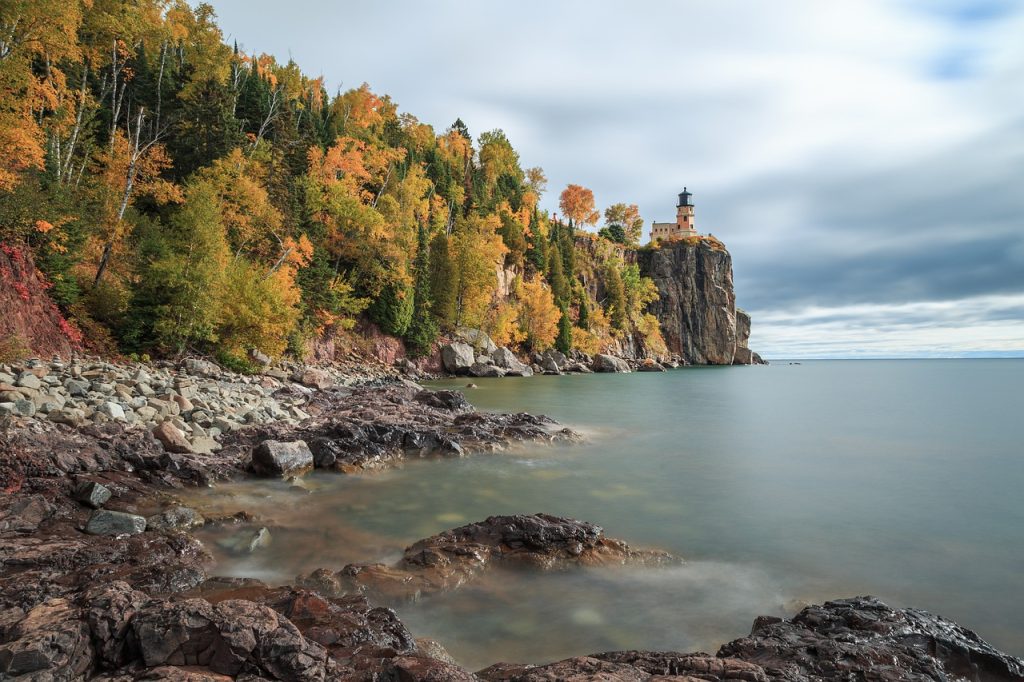
The Grand Marais Visitors Information Center is a great place to start. They can give you the scoop on where to stay, eat, and enjoy the sights and sounds of the town. The information center can also give you information on activities and events you can attend in the area. From Duluth, you can travel approximately 110 miles to Grand Marais on Highway 61, which skirts the North Shore. There are many scenic overlooks and lookout points along the way, and the last curve will take you to Grand Marais.
There are also many things to do in Grand Marais. Visitors can check out the local museum and tour exhibits about the area’s history and culture. Visitors can also head out on a lighthouse hike or kayak tour. If you’d prefer to do more active sightseeing, you can also try renting a kayak or canoe and take a guided tour of the city. If you’re in Grand Marais during the summer, it is a great way to explore the area by water.
Itasca State Park
Itasca State Park is an incredible destination for a day trip from Minneapolis. The park contains the headwaters of the Mississippi River and spans 32,690 acres of northern Minnesota. It is a 21-mile drive north of Park Rapids, and about 25 miles south of Bagley. For more information on the park, visit its official website. This is a great place for hiking or sightseeing.
The park includes six observation towers, including the Aiton Heights Fire Tower, which was used to spot wildfires. There are now five of them decommissioned, but the sixth is closed due to the pandemic. While visiting the park, take time to visit the Mary Gibbs Mississippi Headwaters Center, which houses outdoor interpretive displays. You can also take part in a variety of outdoor recreational activities like fishing, hiking, and camping, and dine at the park’s cafeteria-style restaurant.
In 1891, Minnesota’s logging industry reached its peak. Companies moved north in search of prime timber and the Headwaters region was threatened with deforestation. To save the area, local landowners fought to create the park, and Jacob Brower, a historian, and land surveyor became the first superintendent. He spent the last 14 years of his life acquiring land for the park and improving its amenities.
Visitors can take a scenic drive around Itasca State Park and view the river as it flows out of Lake Itasca. The road is shaded by grand north woods trees, and you can often spot deer snoozing in the underbrush. Another popular attraction of the park is the Brower Trail, which extends from the fishing pier at Douglas Lodge to the Bear Paw Campground. From here, you can enjoy the beautiful lake view and dense pine forests, as well as many bird species.
International Wolf Center
If you love wolves, you might be interested in visiting the International Wolf Center, an educational and research organization located in Ely, Minnesota. The International Wolf Center promotes the survival of wolf populations and educates the public about these animals. Its exhibits help visitors understand how humans affect wolves and their populations. You can learn more about wolves by attending an educational event or touring a wolf den.
The study’s findings are based on a survey of 862 tourists who visited the Ely area for five periods from 1995-96. Of these respondents, 445 visited the IWC, while 417 tourists visited the town. Those who visited the IWC and Ely said the International Wolf Center had a great influence on their vacation plans. The study also shows that the International Wolf Center is responsible for sending about 11,000 tourists to Ely each year.
If you have a COVID concern, consider visiting during special hours, such as on Mondays, when the exhibit is closed for maintenance. Visitors can also view the wolves through the glass walls of the building. Though the International Wolf Center is located inside a building, it is a good base to explore the unspoiled landscape surrounding it. While you’re at it, you’ll also find a wolf ambassador group living in the Superior National Forest.
Voyageurs National Park is the perfect place to visit in the summer. If you enjoy hiking and canoeing, you’ll want to check out this park, located right near the Twin Cities. You’ll also be surprised at the number of ghostly haunted attractions in St. Paul, including the Mounds Theatre. This former movie house is haunted, and it’s worth the trip just to see what goes on inside.
Grand Avenue
If you’re visiting the Twin Cities, you should spend some time on Grand Avenue. This three-mile stretch of historic downtown Minneapolis has plenty to offer, including the Minnesota Governor’s Residence. Its rod iron gates, a giant Minnesota flagpole, and beautifully decorated Christmas trees are just some of the many attractions you can enjoy. While it may seem like a tourist trap, Grand Avenue is a great way to see the best of the city.
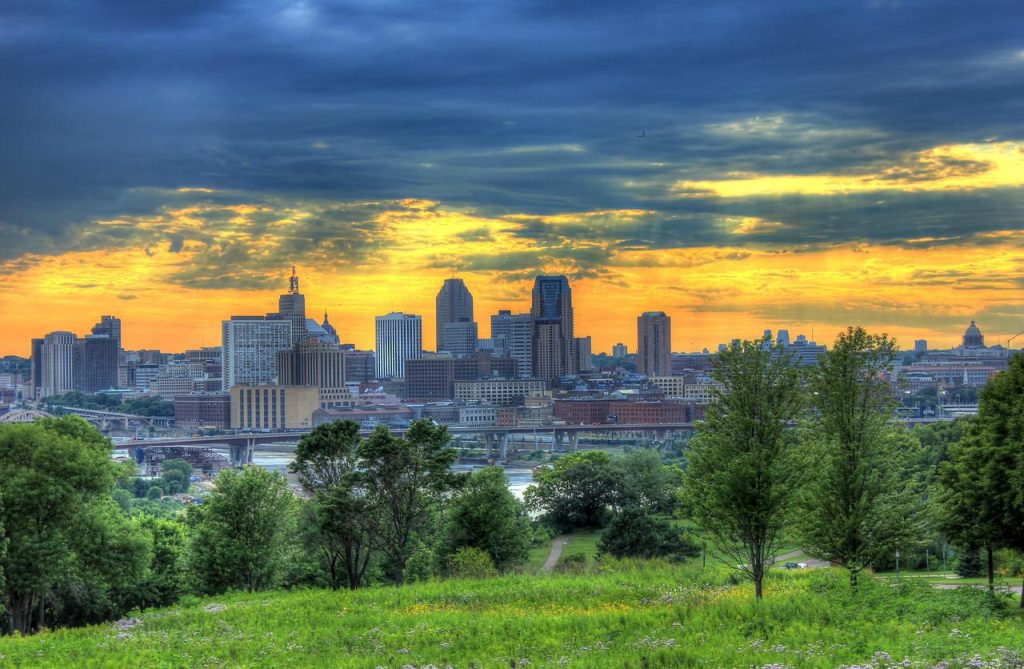
One of the most popular destinations on Grand Avenue is the Wedding Shoppe, which offers affordable bridal attire. You can also visit the Balloon Bunch, a balloon delivery service, and the Northern Brewer for some craft beer. Another great place to purchase a gift is the Lama Bazaar, a yellow and red painted house that houses tons of unique and quirky items. Nearby, GoodThings is a large and unique gift shop. The Running Room sells clothing, shoes, and accessories.
The Twin Cities is home to more than 18 million tourists each year and boasts outdoor fun, culture, and cuisine. Once known for its ports on the Mississippi River, the Twin Cities is a vibrant city that welcomes new experiences while preserving the old. Grand Avenue in Saint Paul is one of the best places for shopping, while Minnehaha Falls Park is a great place to stroll. While you’re walking through the historic streets of Saint Paul, you should also take some time to admire the state capitol building, where golden horse statues sit atop the Minnesota state capitol building.
James J. Hill House
If you have never been to Saint Paul, Minnesota, you must definitely visit the James J. Hill House. This historic landmark is the home of railroad magnate James J. Hill, who completed it in 1891. It is located on the eastern end of Summit Avenue, near the Cathedral of Saint Paul. It is a fascinating piece of American history. The house is now a museum and visitors can take photos here.
This Victorian mansion is the best place to go for the architectural history of the state. The house is more than three thousand square feet, and has twenty fireplaces, sixteen glass chandeliers, and a mighty pipe organ. Visitors can tour the home, which features a 10-minute video that highlights architectural details and interior design. You can even pay $10 to get to see the first-floor rooms. It is truly impressive!
If you are looking for the best way to spend a day in Saint Paul, a visit to James J. Hill House is a must-do. This 36,000-square-foot mansion, built by railroad magnate James J. Hill, has a plethora of rooms for guests to enjoy. The museum is open Tuesday through Saturday from 10:00 a.m. to 4 p.m. and Sundays from noon to four p.m.
This beautiful mansion, located on Summit Ave. in Saint Paul, was built by a railway magnate during the Gilded Age. Its interior is filled with nooks and crannies, and the docents are delighted to show off the many special features of the home. You can learn about the mansion’s history and the railway’s history during your tour. If you have a little extra time, visit the art gallery.






